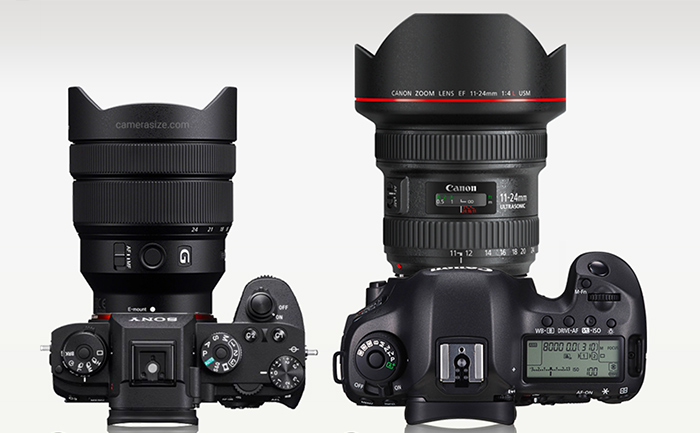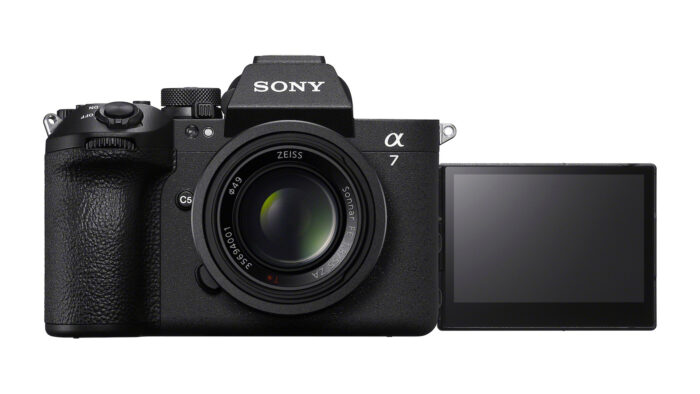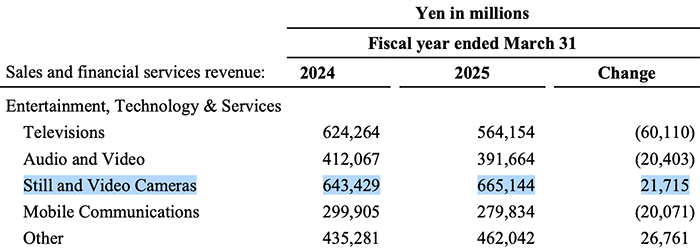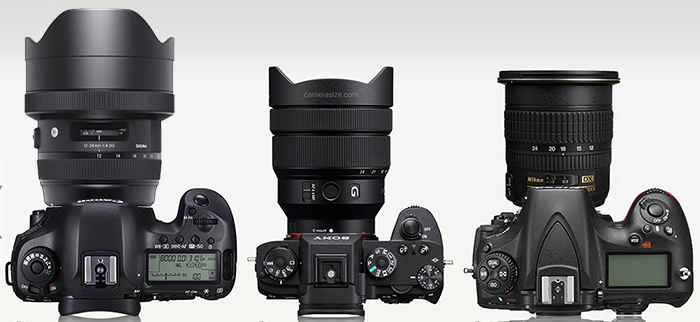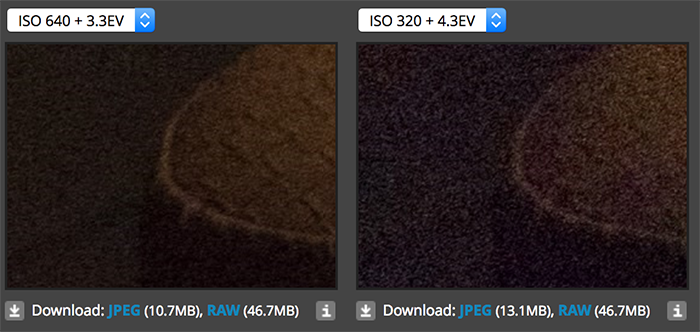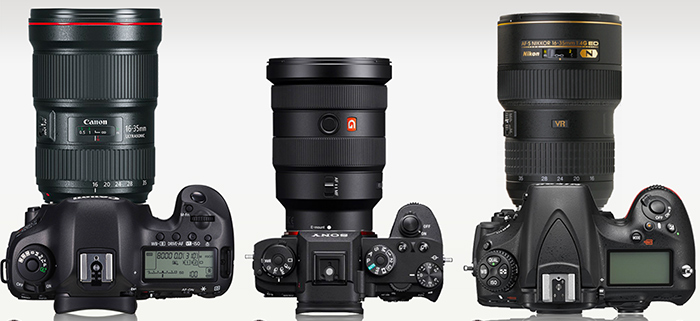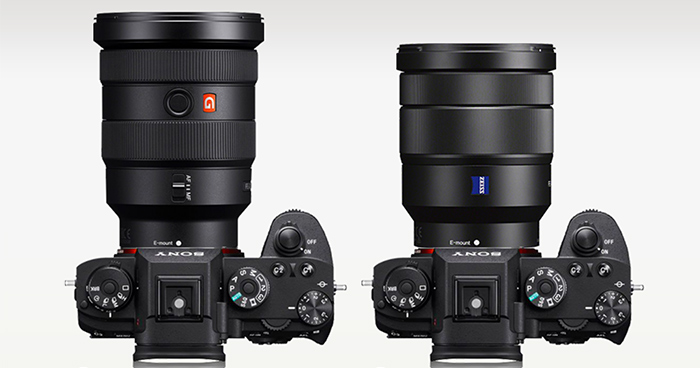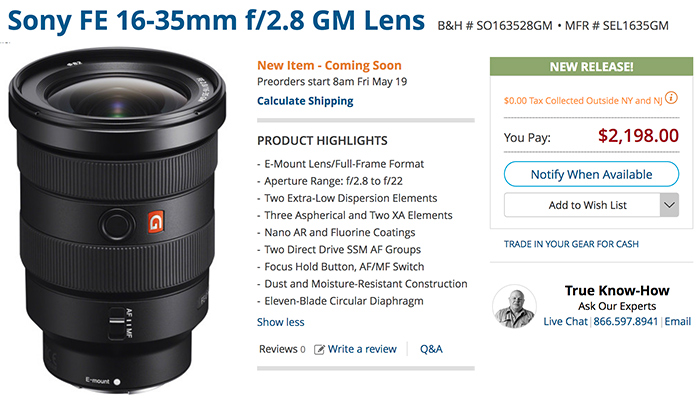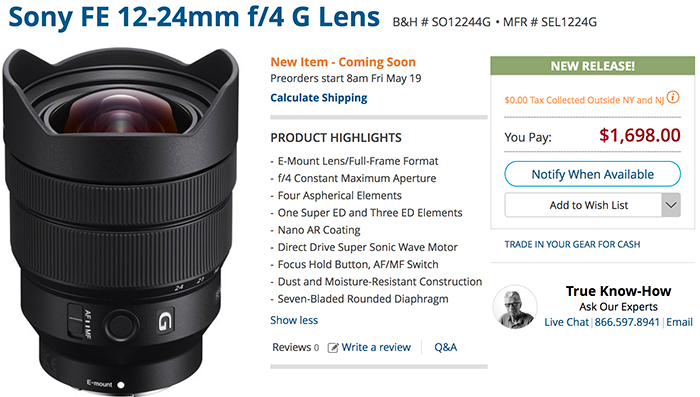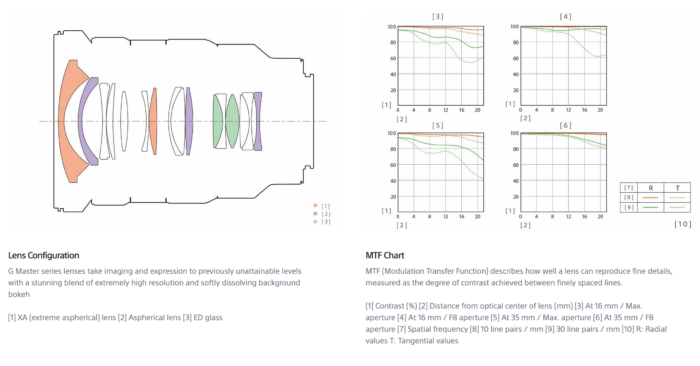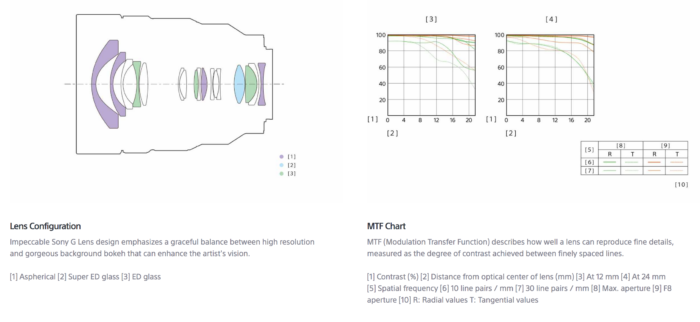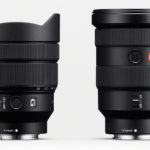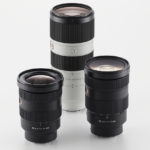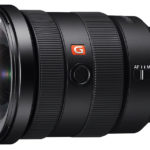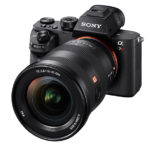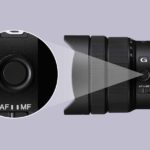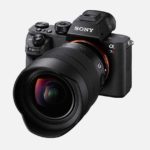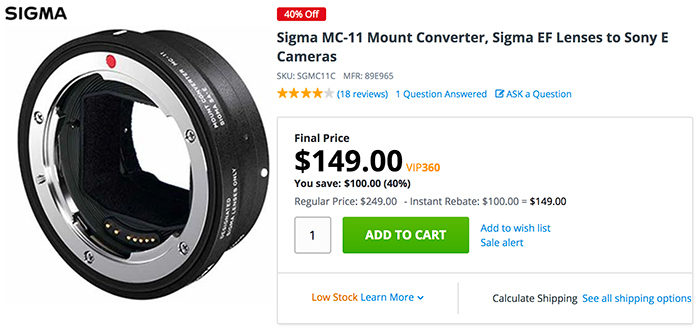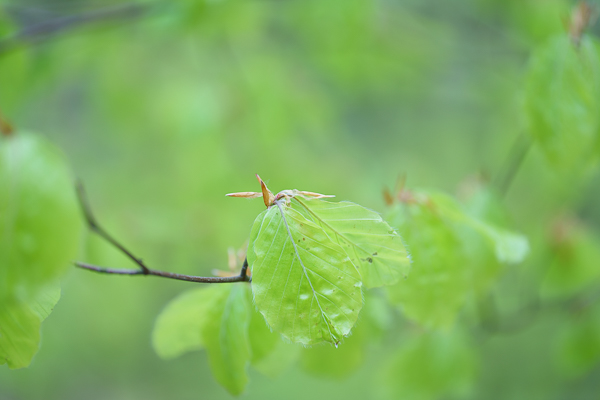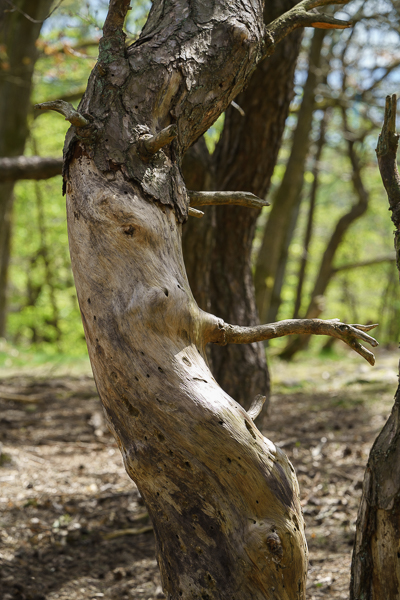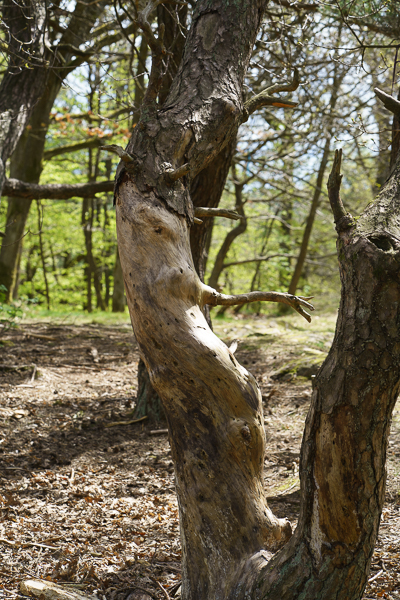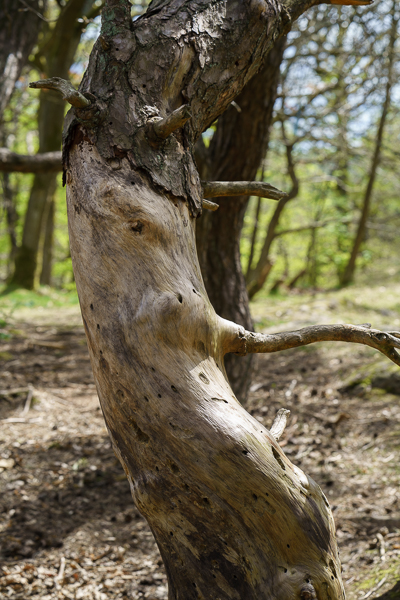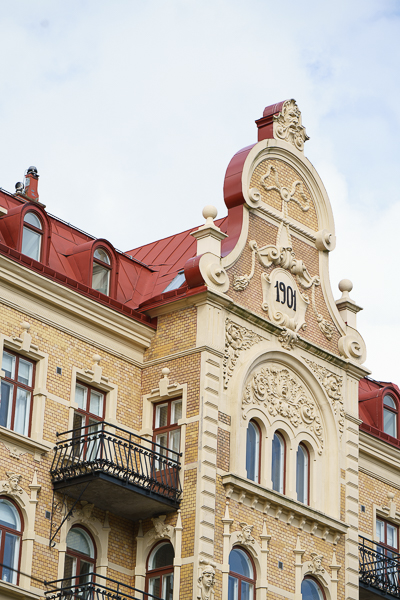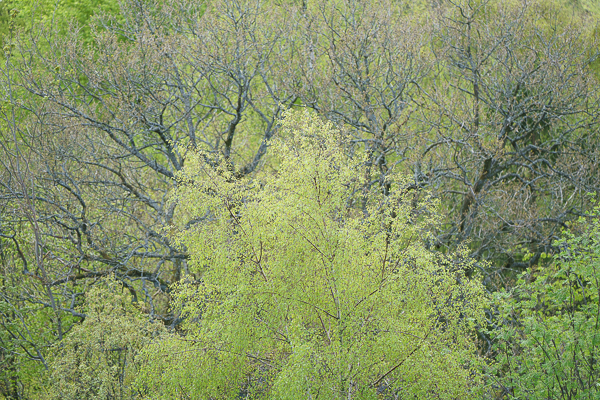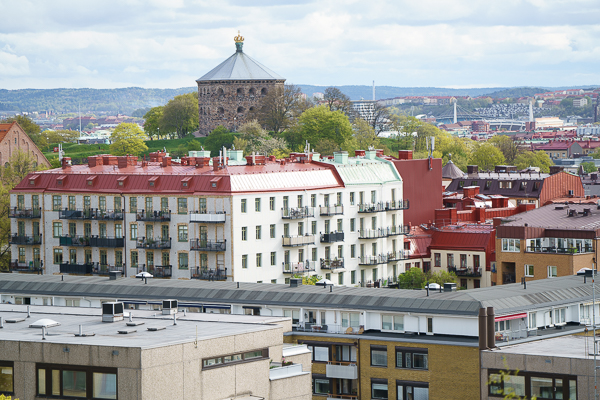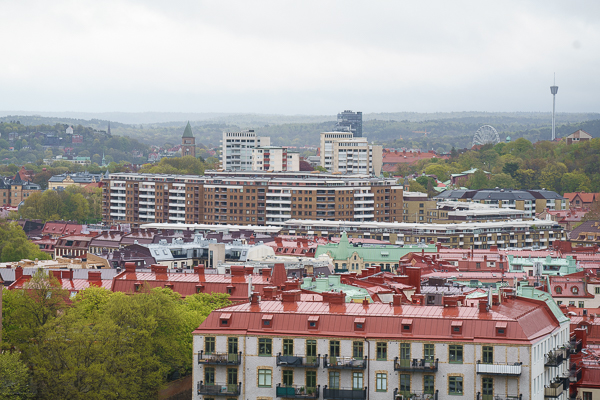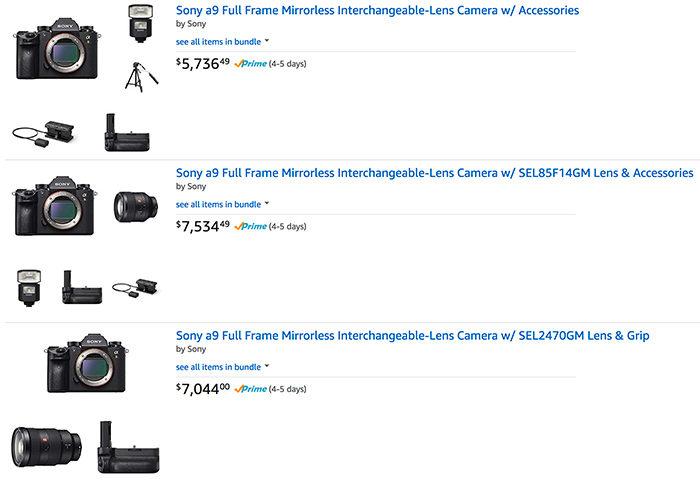There’s a lot of rubbish some people talk about 12 vs 14 bit RAW files. The fact is, by the time you get to about 800 ISO even the best FF cameras only have about 10 bits worth of dynamic range (at the pixel level) so 12 bits are ample as the bottom 2 will just be noise anyway. It will only be at very low ISOs where you might see some difference, and then only if the sensor has low read noise. Of course you get a bit more back when downsizing, but RAW files contain per-pixel data.
On an ISO-invariant sensor you lose one bit of resolution for every doubling of ISO speed anyway, so even 12 bits becomes irrelevant. Of course this camera is clearly not ISO invariant as it’s probably optimised for higher ISOs needed for action photography (the Canon & Nikon equivalents to the same), so it might be that the loss of (bit) resolution doesn’t follow that precise model, but it’s true in general.
Sony 12-24mm FE G lens size comparison with Sigma and Nikon
Base image via CameraSize with Sigma lens addition from me:
Sigma 12-24mm on the left, Sony 12-24mm and Nikon 12-24mm on the right (The Nikon is quite an old lens)
Preorders:
Sony 16-35mm f/2.8 GM at Bhphoto, Adorama, BestBuy and Amazon. In EU at Calumet DE, WexUK, Jessops.
Sony 12-24mm f/4.0 at Bhphoto, Adorama, BestBuy and Amazon. In EU at Calumet DE, WexUK, Jessops.
Let’s focus on the new 12-24mm FE G lens. Specs and image samples can be found at Sony.net. Helpful hands-on videos of this lens by Max Yuryev and Dan Watson.
Curiosities:
– The lens weights half as much as the Sigma 12-24mm or Canon 11-24mm lens! And MTF graph is on par with the Sigma…promising!
– It is only priced $100 more than the Sigma. This is just to say that unusual for Sony pricing seems to be fair in this case :)
– Just like the new 16-35mm GM also the 12-24mm lens has a new fly by wire focus mechanism
– In first testings this lens is surprisingly resistant to flare. Unusual for such a wide angle zoom.
Our reader Joe noted that: “Sony 12-24/4.0 + Sony A7r2 weigh 1.19kilos Sigma 12-24/4.0 alone weighs 1.15 kilos 🤣” Image via Wei:
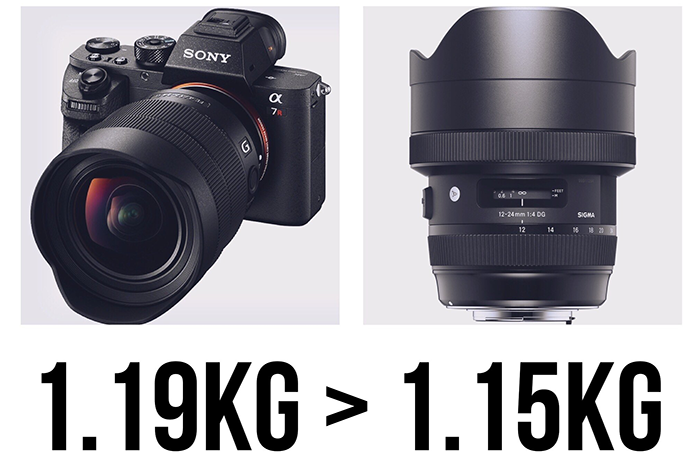
And here is the comparison with the Canon 11-24mm lens which costs $2,700 and weights twice as much. At last we can say Sony is cheap compared to a Canon lens :)
